TNPSC Books
-
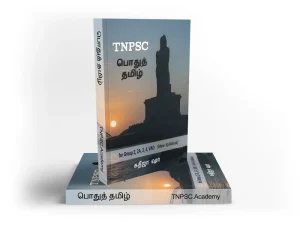 TNPSC பொதுத் தமிழ் Book - for Group 2, 2A, 3, 4 & VAO
TNPSC பொதுத் தமிழ் Book - for Group 2, 2A, 3, 4 & VAO
₹1,000.00Original price was: ₹1,000.00.₹850.00Current price is: ₹850.00. -
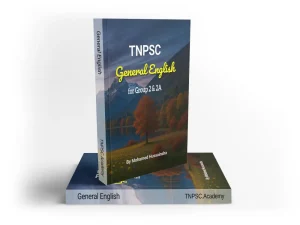 TNPSC General English Book - for Group 2 & 2A
Rated 5.00 out of 5
TNPSC General English Book - for Group 2 & 2A
Rated 5.00 out of 5₹1,000.00Original price was: ₹1,000.00.₹850.00Current price is: ₹850.00.
Group 1 Courses
Group 1 | Postal and Online Test Series | 2022
₹3,200.00Original price was: ₹3,200.00.₹2,800.00Current price is: ₹2,800.00. 88TNPSC Group 1 - Test Series - 2019
4.7₹3,500.00Original price was: ₹3,500.00.₹2,800.00Current price is: ₹2,800.00. 542
Group 2 & 2A Courses
TNPSC Group 2 and 2A - Test Series - 2019
₹2,400.00Original price was: ₹2,400.00.₹1,800.00Current price is: ₹1,800.00. 527TNPSC Group 2 and 2A - Test Series - 2019 - தமிழ்
₹2,400.00Original price was: ₹2,400.00.₹1,800.00Current price is: ₹1,800.00. 175
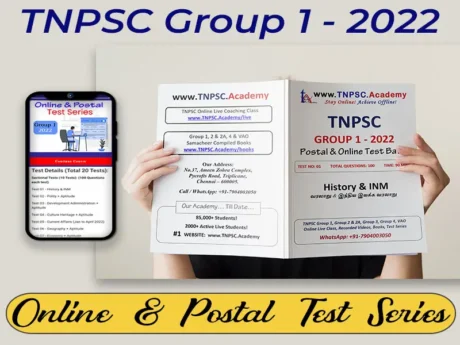



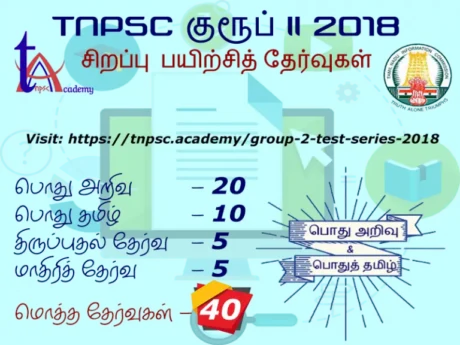
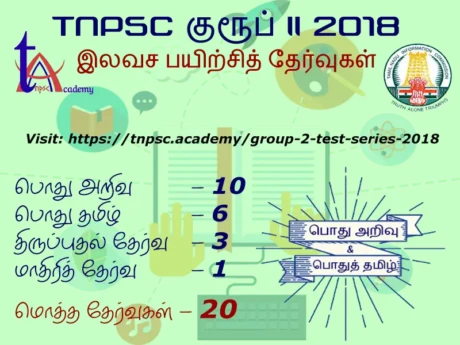
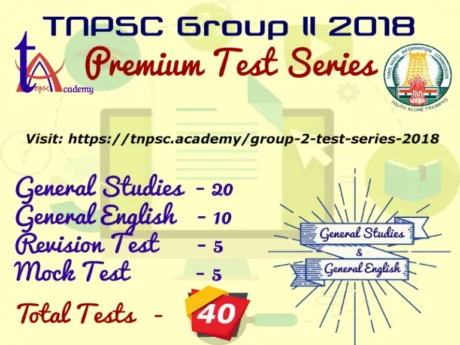





In TNPSC Syllabus, we may see that, TNPSC has given the title “Degree Standard”.
This will be a major doubt for many fresh aspirants.
By saying as “Degree Standard”, TNPSC means the level of Exam (and not the level of questions). The qualification for attending Group 4 and VAO is 10th standard and 12th standard only. Whereas the qualification for Group 2, 2A and Group 1 is Degree. That is passing of SSLC (10th standard) or HSC (12th standard) is enough for attending Group 4 and VAO Exams. But for Group 2, 2A and 1 the candidate should complete his/her degree.
This is what is termed as “Degree Standard” in TNPSC Syllabus.
The questions asked for TNPSC Exams, both in Prelims and MAINS for all Group 1, 2 & 2A, 4 & VAO is from basic General Studies only which is already covered widely in Samacheer books. As we have already mentioned, the Syllabus topics itself is taken from Samacheer lessons. Hence it is enough to read Samacheer books. There is no need to go for any other degree standard books.
Also note that, if you think TNPSC may ask question from degree books than the school books, then look at the below simple calculus:
In TNPSC Syllabus we have some of the following important subjects:
Each and every subject given above will take minimum 3 years of degree completion. So, for simple calculation, to cover all the above subjects one may take 21 years (7 x 3) to complete reading them in DEGREE STANDANDRD.
After that, they will appear for the exam? Is it so? Is there any logic in this?
A BIG NO!
So, keep in mind that, the Degree standard is for noting it as an degree qualification exam and it does not denotes the question’s levels.
TNPSC பாடத்திட்டத்தில், TNPSC “டிகிரி ஸ்டாண்டர்ட் (Degree Standard)” என்ற தலைப்பை வழங்கியுள்ளது.
பல புதிய மாணவர்களுக்கு இது ஒரு பெரிய சந்தேகமாக இருக்கும்.
“டிகிரி ஸ்டாண்டர்ட்” என்று சொல்வதன் மூலம், டி.என்.பி.எஸ்.சி என்பது தேர்வின் நிலை (மற்றும் கேள்விகளின் நிலை அல்ல). குரூப் 4 மற்றும் VAO இல் கலந்து கொள்வதற்கான தகுதி 10 ஆம் வகுப்பு மற்றும் 12 ஆம் வகுப்பு மட்டுமே. அதேசமயம் குரூப் 2, 2A மற்றும் குரூப் 1 க்கான தகுதி பட்டம். குரூப் 4 மற்றும் VAO தேர்வுகளில் கலந்து கொள்ள எஸ்.எஸ்.எல்.சி (10 ஆம் வகுப்பு) அல்லது எச்.எஸ்.சி (12 ஆம் வகுப்பு) தேர்ச்சி போதுமானது. ஆனால் குரூப் 2, 2A மற்றும் 1 க்கு ஒருவர் பட்டத்தை முடிக்க வேண்டும்.
இதைத்தான் TNPSC பாடத்திட்டத்தில் “டிகிரி ஸ்டாண்டர்ட்” என்று அழைக்கப்படுகிறது.
அனைத்து குரூப் 1, 2 & 2A, 4 & VAO க்கான பிரிலிம்ஸ் மற்றும் மெயின்களில் TNPSC தேர்வுகளுக்கு கேட்கப்பட்ட கேள்விகள் அடிப்படை பொது அறிவுகளிலிருந்து வந்தவை, இது ஏற்கனவே சமச்சீர் புத்தகங்களில் பரவலாக விவரிக்கப்பட்டுள்ளது. நாம் ஏற்கனவே குறிப்பிட்டுள்ளபடி, பாடத்திட்ட தலைப்புகள் சமச்சீர் பாடங்களிலிருந்து எடுக்கப்படுகின்றன. எனவே சமச்சீர் புத்தகங்களைப் படித்தால் போதும். வேறு எந்த பட்டப்படிப்பு தரமான புத்தகங்களுக்கும் செல்ல வேண்டிய அவசியமில்லை.
பள்ளி புத்தகங்களை விட TNPSC பட்டம் புத்தகங்களிலிருந்து கேள்வி கேட்கலாம் என்று நீங்கள் நினைத்தால், கீழே உள்ள எளிய கணக்கை பாருங்கள்:
TNPSC பாடத்திட்டத்தில் பின்வரும் சில முக்கியமான பாடங்கள் உள்ளன:
மேலே கொடுக்கப்பட்டுள்ள ஒவ்வொரு பாடமும் குறைந்தபட்சம் 3 ஆண்டுகள் பட்டம் படிப்பு ஆகும். எனவே, எளிமையான கணக்கீட்டிற்கு, மேலே உள்ள அனைத்து பாடங்களையும் அவற்றை DEGREE STANDANDRD இல் படித்து முடிக்க ஒருவர் 21 ஆண்டுகள் (7 x 3) ஆகலாம்,
அதன் பிறகு, அவர்கள் தேர்வுக்கு வருவார்களா? அப்படியா? இதில் ஏதேனும் தர்க்கம் இருக்கிறதா?
இல்லை! இல்லவே இல்லை
எனவே, பட்டப்படிப்பு என்பது ஒரு பட்டப்படிப்பு தகுதித் தேர்வாகக் குறிப்பிடுவதேயாகும், மேலும் இது கேள்வியின் அளவைக் குறிக்காது என்பதை நினைவில் கொள்ளுங்கள்.